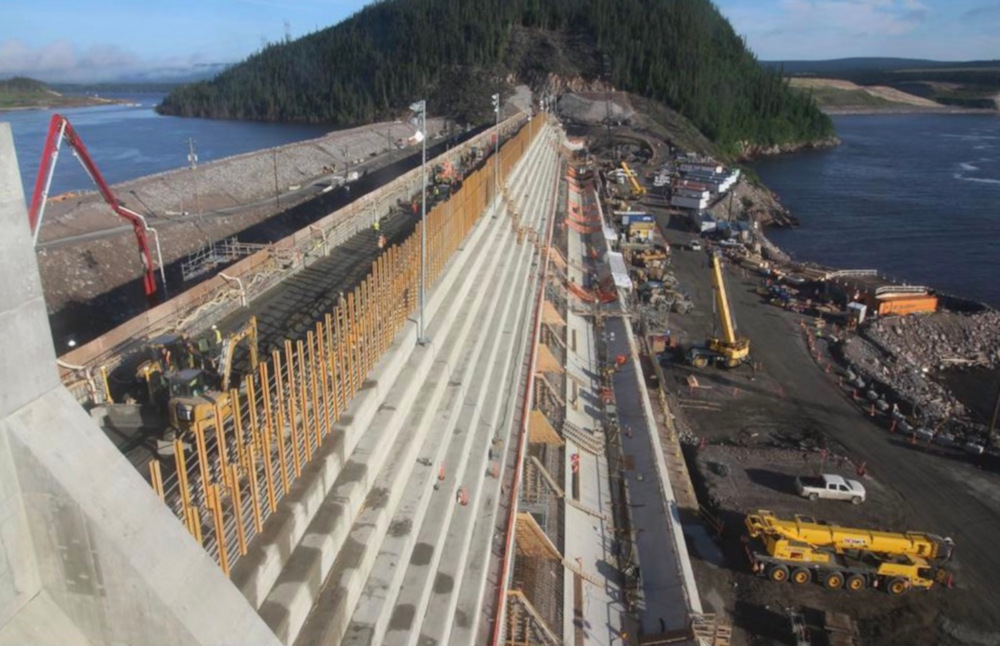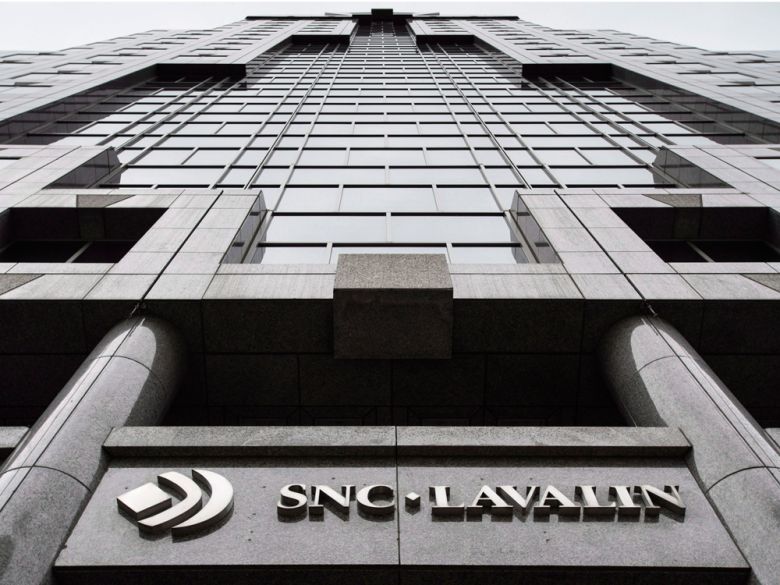“The misuse of public procurement processes in the construction industry, the manipulation of the rules governing the financing of political parties and the infiltration of the industry by organized crime have generated economic costs for society as a whole. They have also undermined its democratic foundations, the rule of law and confidence in public institutions.” — Commission of Inquiry on the Awarding and Management of Public Contracts in the Construction Industry, also known as the Charbonneau Report.
SNC-Lavalin now occupies the centre stage of a national political scandal. It’s but the latest for the engineering giant, whose list of bad behaviours is so long that the magazine L’actualité actually called Canada’s largest engineering construction firm “the shame of Quebec Inc.”
Company executives bribed officials (the code word was “project consultancy costs”) in several countries to secure contracts and also bribed local officials involving a $1.3-billion Montreal “super hospital.”
In addition, the firm made illegal political party donations to municipal, provincial and political parties on a massive scale. SNC-Lavalin still faces federal charges it bribed Libyan government officials with $48 million while defrauding Libyan organizations of another $130 million.
A successful prosecution could deny the company access to federal contracts for 10 years.
And now the decision of former attorney general Jody Wilson-Raybould to go ahead with that prosecution lies at the heart of a scandal that threatens the Liberal government led by Prime Minister Justin Trudeau.
The argument for deferring prosecution is that SNC-Lavalin swears it has changed its stripes, imposed guidelines and taken the right ethical courses. The rogue actors have left the company or faced the courts, pleads the company. Better to salvage jobs and business in Quebec than punish a corporation that has learned its lesson and is ready to play fair like its competitors do.
But that’s not how corruption works. Especially in the type of business SNC-Lavalin pursues. In fact, construction firms have a global habit of behaving badly from Brazil to Newfoundland.
‘The mechanism’ and how it works
Corruption in the construction business usually requires a trifecta of conditions: political parties hungry for funds, engineering firms hungry for contracts and governments seduced by the political rewards of large projects with poor oversight. Not all of it is strictly illegal.
In 2011, Transparency International, an anti-corruption watchdog, laid out the essential details in its latest “Bribe Payers Index” for 19 different business sectors.
Bribery of various kinds tainted every sector, revealed the watchdog, though agriculture seemed to be the least affected. In contrast, “public works contracts and construction” got the worst score and ranked at the bottom of the list, right next to utilities, real estate and oil and gas firms.
No huge surprise, given that large public contracts combined with complex engineering frequently make a mockery of schedules and budgets. “This makes it easier to hide and inflate additional expenditure,” explained the watchdog.
A web of subcontractors on complex projects makes it even easier to disguise the level of graft. So, too, does something called optimism bias — people’s natural tendency to underestimate what could go wrong. And then there’s the tendency of engineers to lowball or lie about cost estimates to win political approval for a project.
So, because construction firms find stakes on big projects so high, and dirty dealings so easy to do, they are more likely to bribe low-level officials with gifts and favours, bribe other firms and use “improper contributions to high-ranking officials intended to secure influence over policy, regulatory and/or legislative decisions.”
The Brazilian film director José Padilha has a name for this kind of collusion and corruption. He calls it “the mechanism,” and says it has no ideology. Left-wing parties and right-wing parties all succumb to the mechanism and solicit its favours.
The mechanism works for itself and by itself. Companies that perform work for governments make political contributions and in turn win overpriced contracts milked to the bone. A portion of the gains goes back to the political parties to fund the mechanism. It is a well-engineered wheel.
Many Canadians are in denial about how powerfully the mechanism works in our sputtering democracy. But it is alive and kicking wherever political parties fund overscheduled and overpriced construction projects with taxpayers’ money.
In British Columbia, for example, the BC Liberal Party ordered BC Hydro to buy too much energy from private providers. Then BC Hydro paid too much for the energy it bought by billions of dollars. How much of that money found its way back to the BC Liberal Party? It’s a documented fact that BC Liberal donors tended to get the lucrative contracts to privately provide energy.
Given that taxpayers pay for the cost overruns and that public employees never get fired for cost overruns, “strong incentives exist for proponents to strategically misrepresent initial budgets to get a project approved, funded and started, knowing that once work begins, few projects are ever halted,” found a University of Toronto report.
Where does that get you? Ask the taxpayers of Manitoba, now grappling with surreal cost overruns at the Keeyask Dam, a debacle authored by the New Democratic Party.
Mega-projects and ‘the elephant’
But mega-projects aren’t just unwieldy and overhyped. They can easily incubate corruption. In 2017, a group of University of Leeds researchers called corruption on publicly funded mega-projects “the elephant in the room.”
For starters, it is easier to hide bribes and inflated claims in large projects than it is in small ones. Political oversight is often weak because of political bias to get huge projects done as quickly as possible. Mismanagement also makes it easy to hide graft.
The researchers described how the mechanism worked at mega-projects. Time after time “engineers deliberately falsified costs, time and benefits forecasts” while embracing a deliberate and systematic optimism bias to promote a particular project at the expense of cheaper or better alternatives.
“In exchange, politicians might obtain either bribes, support to their election campaigns, or both. Therefore, corruption affects projects and megaprojects performance leading to the delivery of works with limited social benefit, poor economic returns and over-cost.” (For an example threatening Brazil’s democracy, see sidebar.)
Corruption wasn’t just a matter of rogue individuals; it was contextual, noted the authors, who portray an industry discouraging of whistleblowers. They found engineers didn’t like to talk about mega-projects and corruption in the same sentence. In fact, leading management journals, the very ones engineers read on a daily basis, rarely mentioned the word corruption.
The authors concluded, “Despite the relevance of corruption in public projects and megaprojects, it seems that is not convenient to research, to talk and to write about it.”
Small wonder, then, that in big project environments, engineers just act strategically and do what everyone is doing. Trained to ask how, they rarely ask why.
Maybe the Wilson-Raybould affair will change that in Canada. If so, it’s been a long time coming, the lessons played out in five scenes, the final one not yet finished. The protagonist throughout: SNC-Lavalin.
Scene one: Montreal 2011
Pierre Duhaime, a jaunty mining engineer, was at the top of his game. The long-time SNC-Lavalin employee, who worked his way up the proverbial ladder, had been CEO for two years. With the appointment, he had joined Canada’s corporate royalty, and the kingdom looked healthy and robust.
In 2011, the company celebrated 100 years of dam, mine and bridge building. A darling of Canadian investors, SNC-Lavalin was growing rapidly with more than 30,000 employees. It had completed thousands of engineering projects in nearly 100 countries.
Lucrative contracts had been secured in British Columbia and Libya. The new prison SNC-Lavalin was going to build on orders from dictator Muammar Gaddafi would be according “to international human rights standards,” the company assured the Globe and Mail.
Contract workers from Thailand and the Philippines had been hired for the job. The company also boasted it had just won a $1.3-billion contract to build for McGill University “Canada’s largest healthcare facility.” Duhaime earned a cool $5 million a year. Investors were happy.
Duhaime touted his leadership style as careful and measured. In a video made for Canadian Business magazine he said running things right was all about “bringing the team with you, not to run in front of the team and hope they will follow.”
The company’s 2010 annual report declared it knew “how to get it done anywhere in the world.” Gwyn Morgan, shale gas baron and political advisor to former B.C. premier Christy Clark, chaired SNC-Lavalin’s board of directors and praised the firm’s commitment to integrity and transparency.
But towards fall 2011, two cracks appeared in SNC-Lavalin’s fortress. The RCMP raided company offices in Ontario over allegations of bribery on a bridge contract in Bangladesh. (The World Bank would later ban the company from doing any business on its projects for 10 years.)
The bigger crack occurred at home in Montreal. Former Montreal police chief Jacques Duchesneau leaked to a journalist a shelved government report he wrote, and it went off like a bomb in Quebec politics.
Duchesneau explained how Quebec’s construction industry, of which SNC-Lavalin formed a vital part, defrauded the public on big contracts and used the gains to fund municipal, provincial and federal political parties.
Duchesneau also diagrammed the mechanism. Corrupt civil servants allowed companies to drive up the price of public works contracts and then companies plowed a portion of their profits back into the political cartels that permitted such behaviour.
The report gave examples but without names. An engineering firm would stipulate that 1,000 trucks would be needed to haul gravel on a project when 100 trucks could handle the job. The surplus cash went to organized crime, engineering firms and political parties.
As calls for public inquiry mounted that fall, SNC-Lavalin’s Duhaime said it wasn’t needed. Quebec didn’t have any more corruption and collusion problems than anyone else, said Duhaime, and the Liberal provincial government of Jean Charest could surely handle these allegations. (Charest was opposed to an investigation too.)
Moreover, SNC-Lavalin had a “policy of zero tolerance for unwanted behaviour.”
Six months later, Duhaime, the zero tolerance man, left SNC-Lavalin after an independent review found that he had approved $56 million in payments to undisclosed agents.
Nearly a year later, Quebec’s anti-corruption police arrested Duhaime for fraud, conspiracy to commit fraud and using forged documents over the company’s contract to design, build and maintain the “super hospital.”
In 2019, Duhaime pled guilty to one of 14 charges. The court sentenced him to house arrest for 20 months and fined him $200,000.

Scene two: Montreal, The Charbonneau Commission
Duchesneau was right about the mechanism.
Between 2011 and 2015 the Charbonneau Commission investigated Quebec’s construction industry and found corruption galore involving the misappropriation of half a billion dollars of taxpayers’ money. “Dirty money” funded the province’s politics.
The schemes were both simple and complex. Engineering firms “financed municipal candidates and organized their elections in order to obtain a large share of public contracts in municipalities, notably on the outskirts of Montréal.”
In a province where public works contracts totaled $7 billion a year, engineering companies colluded to restrict market share. The engineering firms approved a claim for fake upgrades submitted by a construction firm in exchange for a kickback on the resulting payment.
Sometimes companies merely financed political parties with the general goal of maintaining market share. As one expert testified, “political contributions are more profitable and less risky for companies in search of influence than bribing public employees.”
After the commission tabled its findings, SNC-Lavalin and other companies eventually repaid $95 million back to the municipalities and school boards they had overbilled over 20 years.
Scene three: November 2018, Beothuck Building, St. Johns, Newfoundland
As engineer Paul Harrington took the stand, he looked a tad uncomfortable before the inquiry on Muskrat Falls hydro project.
The commission wanted to know how a $6.5-billion hydro project became the $13-billion financial calamity that could bankrupt the province.
Under intense questioning, Harrington, the project’s director for the crown utility Nalcor, admitted that he had never overseen a mega-project before, let alone a hydro project. In the past he had mostly worked on oil and gas projects in Alberta and Newfoundland.
SNC-Lavalin, of course, played a role. In 2011 it had won the engineering, procurement and construction management contract for the project.
But, as Harrington related, the company was a bit distracted by fraud and corruption allegations over its business dealings in Libya.
Nalcor had expected SNC-Lavalin to show up with an A team but a B team appeared instead, said Harrington. Nalcor then struggled with a succession of project managers, poor controls, missed deadlines.
“And, at the time, and I think I need to say this clearly, that the SNC that we see today is much different from the SNC that we were experiencing at the time,” said Harrington.
“They were going through some very difficult situations; accusations of corruption at senior SNC leadership levels. We, you know — the CEO disappeared, he was finally — he was, you know, arrested on corruption charges. All of the people that we had negotiated the EPCM contract with had gone. And there was a lot of public pressure for us to, you know, to — why are SNC on the project? That was difficult to keep people motivated.”

In the end, Nalcor took over the project, which went over budget and over schedule and is now the subject of an inquiry.
Harrington said he didn’t want to talk too much about optimism bias or the tendency of engineers to lowball the costs of projects to win political approval.
Instead he preferred to talk about “hindsight bias.”
“We got the other bias as well, which is hindsight bias. And hindsight bias is again, I believe to be — you know, it’s so easy to fall into that trap that — you know, hindsight bias is also called I-knew-it-all-along syndrome, or creeping determinism.”
Scene four: 2013 Montreal, Charbonneau Commission
Over three days of testimony, Yves Cadotte, SNC-Lavalin’s vice president of transportation and infrastructure, explained the intricacies of contributing to political parties. They eagerly solicited cash, said Cadotte, and he would often deliver the money in briefcases containing between $70,000 and $200,000.
To participate or not participate posed a risk. “That’s the dilemma: not contributing would be a risk that is perhaps intangible,” he said. “Maybe there is no (consequence), but in our mind it’s a risk we don’t necessarily want to take.”
Cadotte also admitted SNC-Lavalin had broken the law. Given that it is illegal in Quebec for corporations to donate to political parties directly, Cadotte described the company’s “straw men” scheme. Executives would ask middle managers and often their wives to donate $1,000 (the personal limit) to a particular party. The company would later reimburse them come bonus time.
In this manner, scores of SNC-Lavalin employees donated more than $1 million to the Quebec Liberal Party and the Parti Quebecois between 1998 and 2010. As Cadotte explained to the commission, “there’s still a party that’s in power and a market that’s important to us. So we want to ensure we continue to be able to conduct our activities and we respond favourably to these requests that are made to us.”
Quebec’s chief electoral officer fined Cadotte a record $245,000 in February 2015 on charges of encouraging scores of SNC-Lavalin employees to make political contributions to Quebec Liberal Party and Parti Quebecois.
In 2016, SNC-Lavalin made an interesting deal with Elections Canada called a “compliance agreement.” The agreement noted that SNC-Lavalin illegally donated $118,000 to the federal Liberal and Conservative Parties between 2004 and 2011 using the same straw man scheme.
The bulk of the money, $100,000, went to the Liberal Party of Canada.
The voluntary compliance agreement, a sort of federal slap on the wrist, meant that SNC-Lavalin executives had now read Canada’s Elections Act and updated the company’s code of conduct. The agreement “does not constitute an admission of guilt under criminal law.”
The unfinished scene
In 2015, SNC-Lavalin’s then CEO Robert Card, an American engineer, realized the company could be banned from bidding on federal contracts if the government’s slow-moving Libya prosecution went to court.
He then mused that the company should “arrange a deferred prosecution agreement with Ottawa to avoid prosecution and developments that might jeopardize the company’s work.”
Orwellian sounding “deferred prosecution agreements” or “no prosecution agreements” are all the rage in the U.K. and the U.S. When faced with the prospect of prosecuting a large company with many employees for economic crimes, governments can grant leniency with a DPA instead. The company must admit to its wrongdoing and change its behaviour.
The moral hazard of such agreements is great. “If you do not punish crimes, there’s really no reason they won’t happen again,” Mary Ramirez, a professor at Washburn University School of Law and a former assistant United States attorney told the New York Times.
“I worry and so do a lot of economists that we have created no disincentives for committing fraud or white-collar crime.”
A bevy of SNC-Lavalin lobbyists went to work arguing for the addition of a deferred prosecution agreement in Canada’s Criminal Code in 2016. Two years later they got their wish as the Trudeau government included “the SNC-Lavalin clause” in the Criminal Code in an omnibus bill C-74.
The prime minister or his office then let it be known to then attorney general Jody Wilson-Raybould they would prefer she defer prosecution. What pressure did they apply? The facts are not yet clear.
But we know she refused and the mechanism hit an unexpected roadblock that has developed into a national political scandal.
The Charbonneau Commission clearly highlighted what is at stake:
“According to the principle of the rule of law, no one is above the law: all individuals are subject to it, including those exercising political power. This principle also aims to protect individuals from the arbitrariness of public authorities, in that the state cannot coerce an individual in the absence of statutory authority to do so.” ![]()
Read more: Rights + Justice, Federal Politics

















Tyee Commenting Guidelines
Comments that violate guidelines risk being deleted, and violations may result in a temporary or permanent user ban. Maintain the spirit of good conversation to stay in the discussion.
*Please note The Tyee is not a forum for spreading misinformation about COVID-19, denying its existence or minimizing its risk to public health.
Do:
Do not: